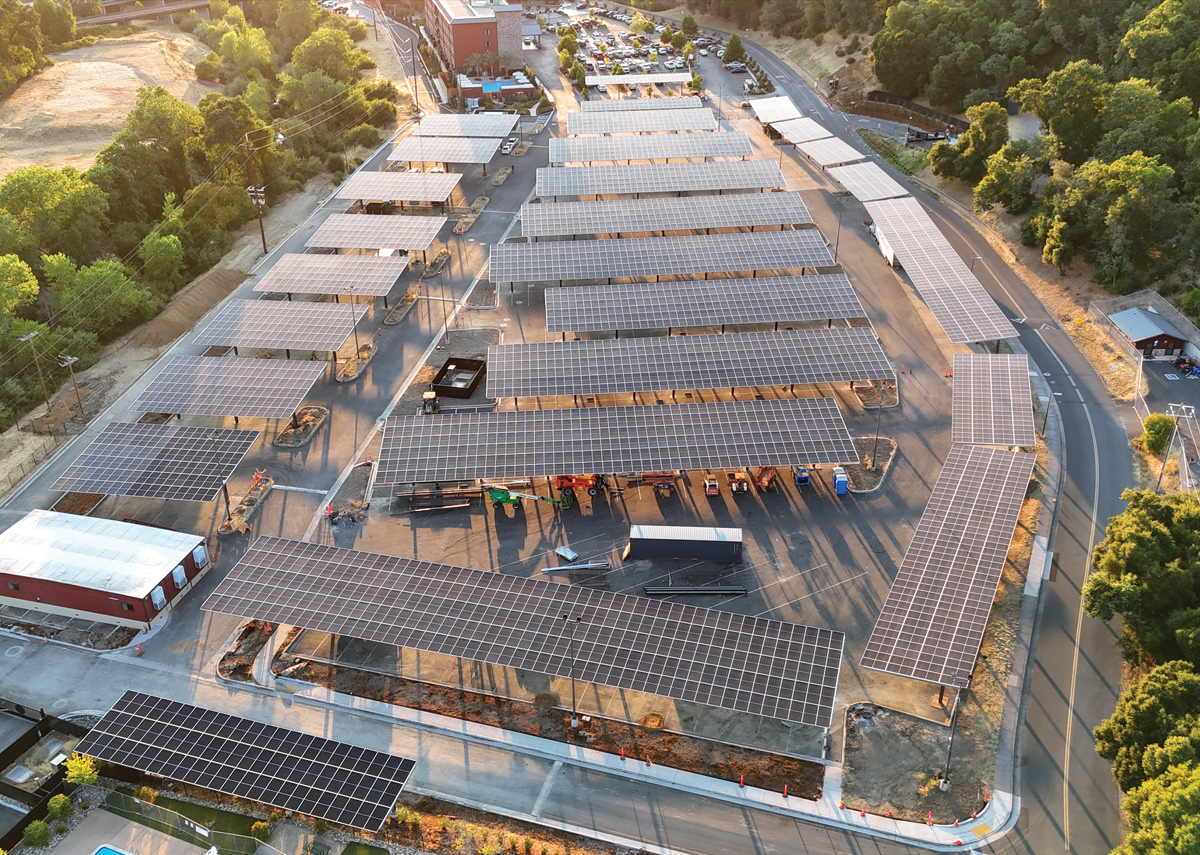By Claire Broido Johnson, Co-Founder and President of Sunrock Distributed Generation September 30, 2025

New financing models are empowering small and medium-sized enterprises and non-profits to adopt solar and storage solutions with no upfront costs. © Watthub
Back when I served under Secretary Chu at the Department of Energy, we used to say energy efficiency was the “low-hanging fruit”— or even “the fruit on the ground”. Fast forward 15 years, and the landscape has changed dramatically. AI, cryptocurrency, and data centers are driving energy demand through the roof, and we now accept a projected 25% increase1 in U.S. electricity consumption by 2030.
On July 4 of this year, the One Big Beautiful Bill Act (OBBBA) was passed, initiating a phased elimination of the solar Investment Tax Credit (ITC). The ITC for residential solar projects will end on December 31, 2025, except for those that begin construction before July 4, 2026, or become operational by December 31, 2027.
The ITC for commercial solar projects will follow a separate phase-out schedule, with details to be finalized by the Department of Energy later this year. Meanwhile, the federal response to grid congestion, transmission bottlenecks, and supply constraints is increasingly leaning on fossil fuels—an ironic twist in the energy transition.
Yet amid these challenges, a powerful and underutilized solution is hiding in plain sight: the rooftops of America’s small and medium-sized enterprises (SMEs) and nonprofits. These buildings hold enormous untapped potential to decarbonize the grid, increase resilience, and generate long-term local benefits.
Even better, using power purchase agreements (PPAs) allows these businesses and organizations to receive solar with no upfront costs, freeing up capital for their businesses or non-profit work, while fixing an energy rate for a 20+ year term.
So far, the solar boom has focused on residential and utility-scale markets. Selling directly to homeowners or developing massive solar farms has made the headlines. But that’s changing. OBBBA is set to phase out residential tax credits after 2025, and utility-scale projects now face major uncertainty because of the 2027 placed-in-service deadlines.
As momentum shifts, SME (150 kW–5 MW) commercial and industrial (C&I) solar can finally take center stage.
Big Opportunities in Small and Medium-Sized C&I Solar
Real estate investment trusts, property owners, and financiers who have been waiting for the right moment—this is it. Companies like Sunrock Distributed Generation (Sunrock DG) are stepping in to serve SMEs and non-profit groups that historically couldn’t access PPAs or solar leases due to credit, size, or risk constraints. Here’s why this moment
is different:
- Smarter Underwriting. Sunrock has developed proprietary underwriting tools that evaluate whether a customer will reliably pay a long-term fixed energy bill. That gives us confidence to support projects that were previously deemed “too risky” or “too small.”
- Clarity on Tax Credits = faster speed to market. The U.S. Government has now set clear timelines for the ITC phase-out (2027, unless you begin construction or safe harbor before July 2026). The ambiguity around “foreign entity of concern” (FEOC) and safe harboring rules is resolving. The message is clear: now is the time to secure rooftops, queue for interconnection, and move quickly. As the market settles, capital will adapt. EPCs will sharpen their pencils, financiers will compress margins, and we’ll all benefit from reduced regulatory uncertainty.
- Speed and Cost Advantage. Solar remains the fastest and most cost-effective generation resource to deploy, as shown year after year in Lazard’s Levelized Cost of Energy2 reports. When brownouts and blackouts hit—and they will—solar will be able to respond far more quickly than natural gas or nuclear projects, which face long permitting and construction timelines. Utilities need fast solutions, and C&I solar delivers.
- Solar + Storage = Grid Value and Resiliency. One of the biggest winners in the OBBBA is energy storage, which will benefit from the full ITC until 2032. Sunrock DG’s ability to finance solar + storage PPAs and leases eliminates
the concern of solar intermittency. - Storage enhances resilience and helps solve congestion challenges—something grid operators are desperate for, as highlighted in the NERC 2025 State of Reliability Report.3 Adding capacity (from solar+storage) in Texas, for example, reduced rolling blackouts from 12% to 0.3% so far this summer, according to the state’s grid operator, ERCOT.4
- Utility rates are going sky high! No way around it—want to lock in a fixed rate? Sign a PPA while you increase your property value with solar on
your roof.
Conclusion: Time to Double Down
C&I solar isn’t just a compelling decarbonization strategy—it’s a business opportunity whose moment has arrived. With strong policy tailwinds, better financing tools, and maturing market conditions, the rooftops of America’s commercial sector may well be the keystone to accelerating our clean energy future.
Let’s stop overlooking them.
About the Author
Claire Broido Johnson is the President of Sunrock Distributed Generation and a veteran climate tech entrepreneur. A SunEdison Co-Founder and former DOE Advisor, she has 30 years of experience scaling solar and clean energy platforms, driving innovation in project finance, and expanding access to distributed energy for diverse organizations.
Sources



